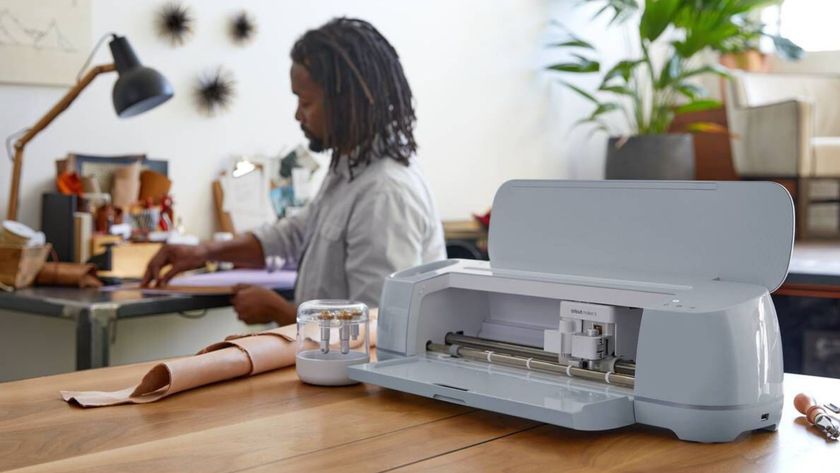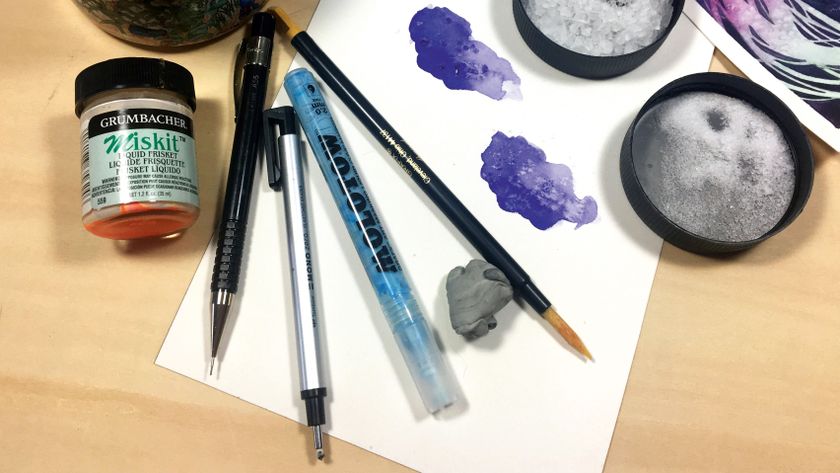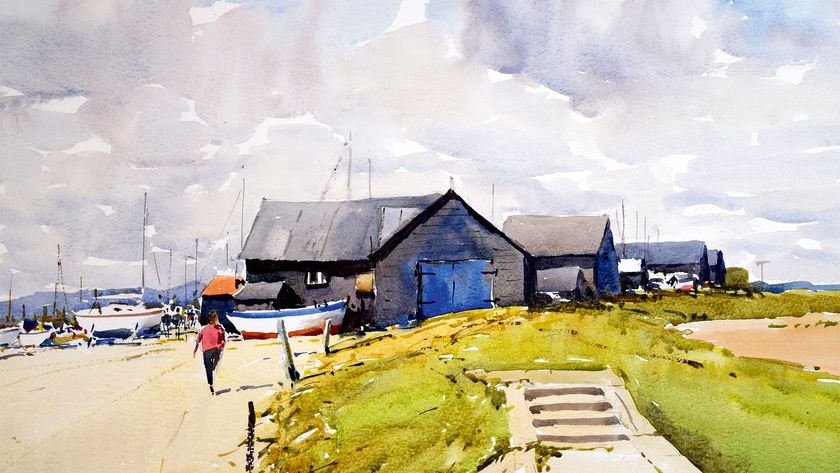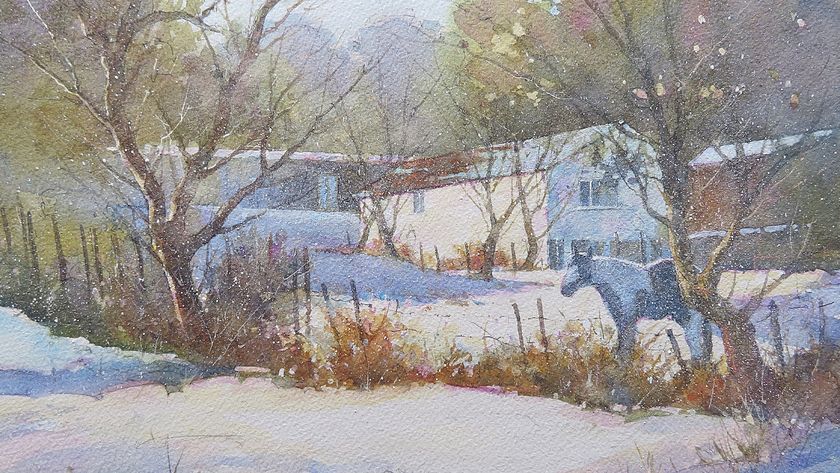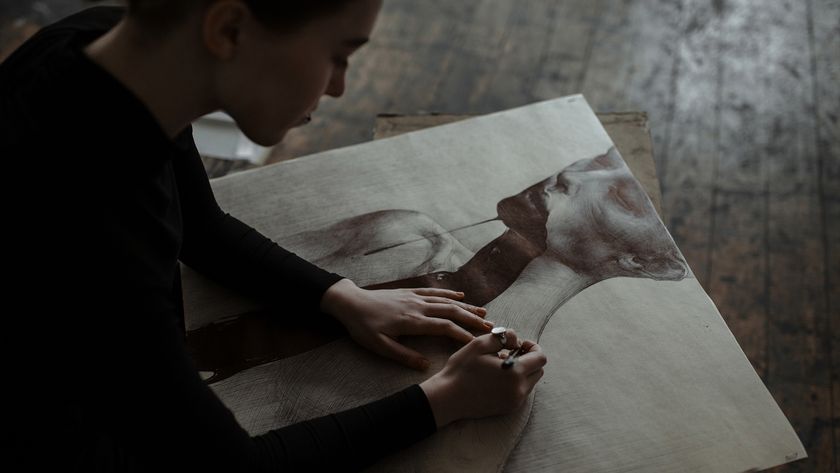How to frame your own art
Learn how to frame your own art to protect your precious artwork and make it shine.
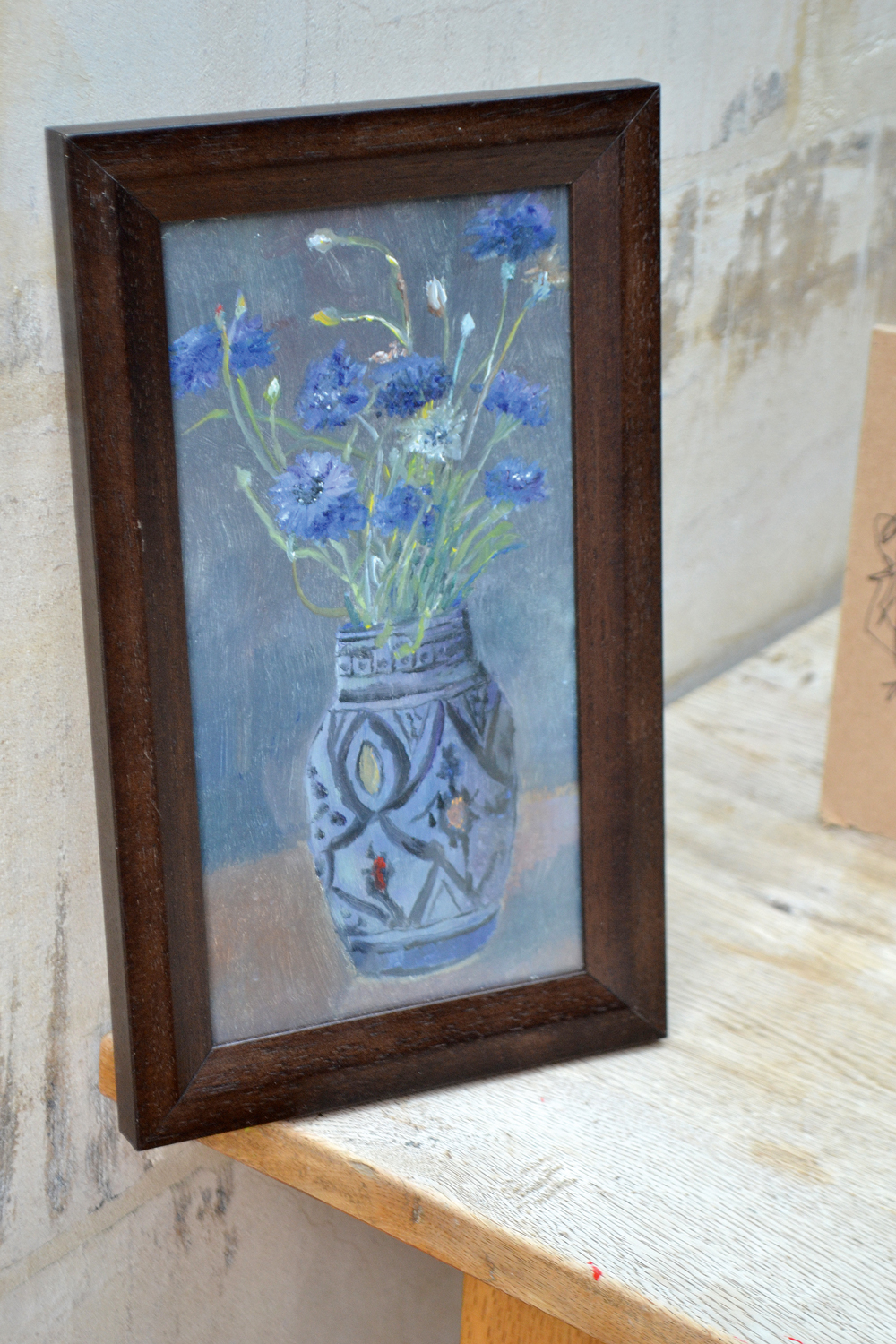
Learning how to frame your own art could save you money as getting your art professionally framed can be expensive. Ready-made frames are a cheaper alternative, but they’re only suitable if your work is a standard size such as A4 or A3. If you want a cost-effective solution, with the flexibility to accommodate unique-sized art, then you can make your own frames. It’s not as hard as it sounds.
In this guide, Rodney Dive will explain how to frame your art at home, without using the expensive automated equipment you see in a professional workshop. With a little practice and an eye for detail, there’s no reason why your frames can’t be as good as the ones your local framing shop makes.
In need of new equipment? Get yourself the best pencils with our handy guide, then browse the best easels, too.
How to frame your own art
01. Organise your tools
You’ll initially need to invest in a minimum set of tools to get started, but you’ll quickly recuperate the cost of those when you produce your first few frames at home. You can pick up good quality second-hand equipment from websites such as eBay or Gumtree. When buying tools you get what you pay for, since cheap tools generally produce inferior results and don’t last as long.
The best buying advice I can offer is to start making frames with whatever equipment you have to hand (making sure your tools are clean and your blades are sharp), and it will soon be apparent what you’ll need to buy. As with most things, the more you do it, the more you will develop your own working methods and practices, then you can buy tools to suit.
02. Measure up
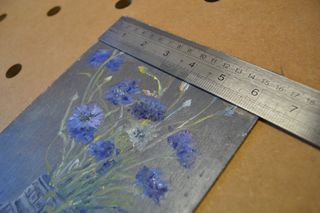
Make sure you have an area to work in that’s clean, flat and large enough to fully support the piece you are working on. First, measure your art. If you’re not using a mount board or mat then your frame should match the length and width of the artwork. If you are using a mount board then the measurements of the mount will of course determine your frame size.
Once you have the dimensions, put your artwork out of the way to prevent any contamination from dust or glue. When working on a particularly precious piece of work, I make a blank out of card, the same size as the art I’m framing, to use for test fitting in the workshop to avoid damaging the original painting.
Get the Creative Bloq Newsletter
Daily design news, reviews, how-tos and more, as picked by the editors.
03. Work it out
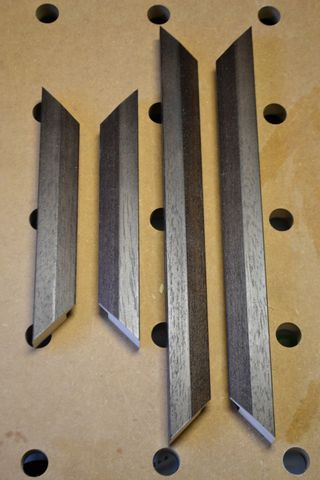
To work out how much moulding you will need, first calculate the perimeter of the whole frame by adding your measured width and height dimensions together, then doubling that number. Next, measure the width of the moulding you’ll use, multiply this measurement by eight and add it to your total length, to account for the mitred edges (the 45-degree cuts that will match up to form the corners of the frame).
Add on 10 per cent to allow for wastage. Examine your sticks of moulding for knots in the wood or transit damage, then cut around these so that they don’t affect the final finish of the frame.
04. Mark your lengths
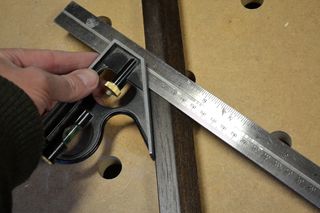
Measure the frame moulding from the inside of the rebate (the tab of material that sticks out at the bottom of the moulding. Once the frame is put together, the rebates make the aperture that holds the glass and art in place). This needs to accurately match your artwork’s dimensions to ensure a snug fit.
Aim to cut slightly larger pieces than required, since it’s easy to skim off a few millimetres to fine-tune the size, but once something’s cut too small, nothing can be done. With this in mind, cut the longest lengths first so if you do make a mistake then these can be re-cut to make one of the smaller sides!
05. Cut the moulding to size
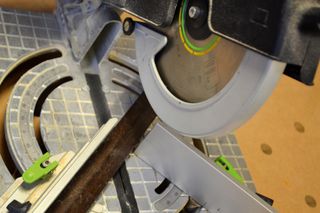
Cut the moulding lengths in two stages. First, use a mitre saw to roughly cut the lengths. Use the finest-toothed saw blade you can get hold of – the finer the teeth, the cleaner the cut.
It’s worth investing some time in setting up your saw to make sure it cuts true – use some of the spare moulding to do test cuts to check the angle accuracy and to see if the saw blade will splinter the finish. If this does happen, wrap some sticky tape around the area you’re cutting to prevent it from splintering.
06. Prepare for joining
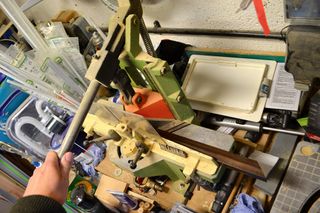
Finish the moulding cuts with a mitre guillotine, which will hone the edges to be joined to create a flat, smooth surface that will bond well and produce a good-looking perfect mitre once joined. Use the guillotine to shave off a millimetre or so from the edge of your rough-cut piece of moulding, then check that all the edges are angled at either 45 degrees or 90 degrees.
Hold your two lengths and two width pieces back-to-back to make sure they’re exactly the same size, so the finished frame will be square. Before joining them, use a marker to colour around the top of the cut edges to hide any slight imperfections in the join.
07. Join the lengths
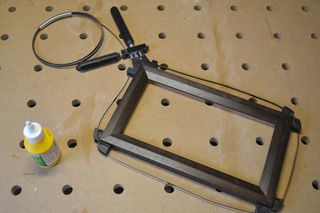
Test-fit the pieces to make sure they sit flush together, and make slight adjustments if needed. Do this on a clean, level surface to also make sure the frame is flat. Next, use some PVA wood glue to bond the faces of the mitres together, then run a band clamp around the perimeter of the frame and tighten it to apply even pressure around the edges while the glue dries.
08. Underpin
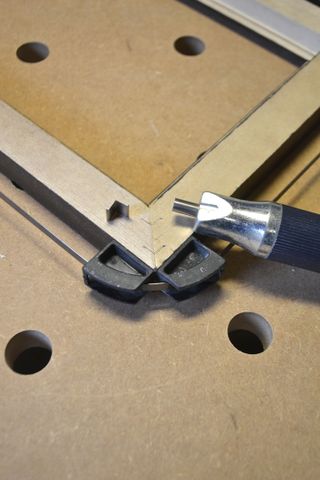
Push a v-nail into the underside of each corner, using a handheld v-nailer tool. These metal v-shaped wedges will pull the frame edges together, adding strength and preventing the weight of the frame from deforming it when it’s hanging on the wall.
Make sure you get the v-nail into the wood the right way around, with the sharper end facing down into the back of the frame corner, with the point of the v-shape meeting the angled join. If your moulding is wide then you should put a number of v-nails along the join – here I’ve used two v-nails to add strength.
09. Measure the glass
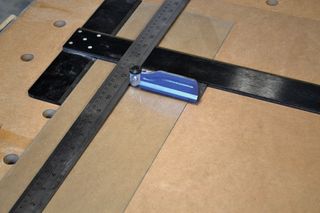
Lay the glass for your frame on a flat, clean surface that’s big enough to support the whole surface of the glass. Use a sharp cutter and a sturdy straight edge that won’t slip – a T-square is ideal and will help you to make straight, square cuts.
Measure the glass to fit your artwork by putting the square underneath your ruler and moving the square into the correct position, remembering to allow for the width of the cutter itself. Before you commence cutting, make sure that everything is in the correct position and that you have enough room all around you to cut the full length of the glass without any obstructions or distractions.
10. Cut the glass
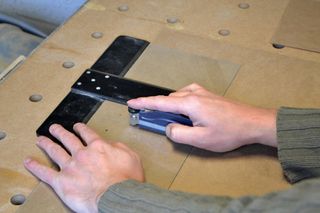
Cutting glass is all about confidence. Scribe the glass firmly with the cutter along the straight edge (if you use enough pressure it should sound like frying chips). Make sure you only scribe the surface once, as this creates a single fault line along which the glass will snap cleanly.
Once marked, hold either side of the scribe-line and apply an even upward pressure until the glass breaks cleanly. Alternatively, place one side of the glass on an elevated surface (the edge of the T-square, for example) and apply a gentle downward pressure to the other side until it snaps. These newly cut edges are very sharp, so be careful when handling.
11. Cut the backing board
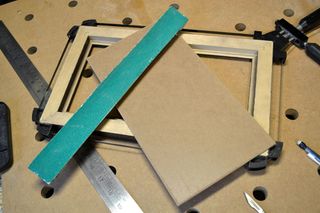
Use 2.5mm MDF or standard hardboard, available from all good hardware merchants, for your backing board. Measure and mark your backing board with a ruler and square. Use a sturdy straight edge and a craft knife to cut it to shape – you might have to take several passes through the material to cut right through. Once cut, sand or plane the edges to prevent splintering.
12. Make it shine
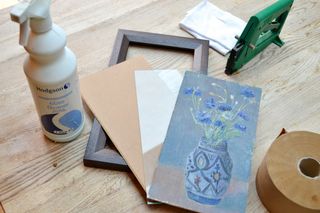
Clean everything, then clean it again. Vacuum up all the dust, polish the frame and clear away surplus tools and equipment. Remove the band clamp and place the frame face-down on your clean, flat surface, then run around the rebate with the vacuum to remove any dust or debris.
Next, clean the glass on both sides using a quality cleaning agent to prevent any smears, leaving a crystal clear finish. Lay the glass into the frame, handling it as little as possible. Again, run the vacuum around the inside of the frame to clear any debris. Next, lay the art on the glass and finally put the backing board in place.
13. Add finishing touches
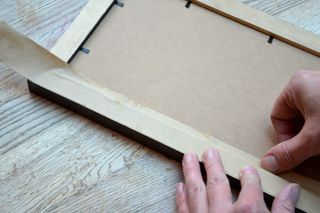
Pin the backing board tight into the frame with some framer’s points or panel pins. Carefully insert these with a pin hammer or a specialist framer’s point gun. Or you could use a PushMaster, which has a handy groove for inserting points by hand. Give everything a wipe down and then run a length of gummed tape around the frame and backing board, cutting it into the corners with a sharp blade to seal the back of the frame.
Finally, position a couple of cord hangers on the frame edges and run a length of picture cord between them. Knot these securely and your frame is ready to hang.
Related articles:
- Art techniques: Tutorials for painting and drawing
- Best watercolour paints: Top watercolours for artists
- How to mount your artwork: Learn how to mount your work

Thank you for reading 5 articles this month* Join now for unlimited access
Enjoy your first month for just £1 / $1 / €1
*Read 5 free articles per month without a subscription

Join now for unlimited access
Try first month for just £1 / $1 / €1


